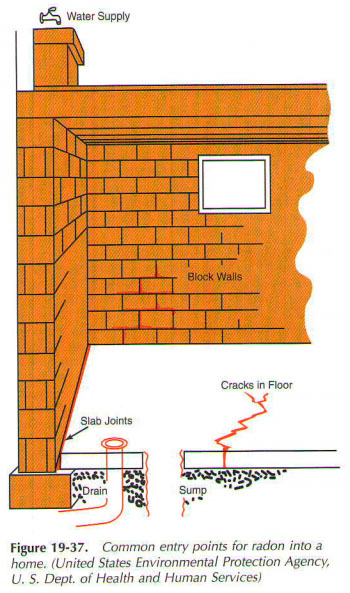Air Pollutants
There are three major air pollutants: asbestos, bioaerosols, and radon. Asbestos-silicate what happens in fiber bundles. It is known for its durability and fire resistance. It was often used in the old commercial buildings. Exposure to asbestos, as a rule, takes place in four settings: the manufacture (production), construction materials (insulation, brake linings), construction and removal. Asbestos cancer-causing agent.
Most of the agencies agree that the asbestos that is not getting worse, should be left alone. Removal of asbestos must be done only professional asbestos removal companies. Sampling for asbestos is managed by monitoring the environment, including visual assessment and, if necessary, sampling. Bioaerosols are airborne microorganisms derived from viruses, bacteria, fungi, protozoa, mites, pollen. They are both indoors and outdoors. Excessive humidity in the room enhances the growth of certain micro-organisms. Some types of humidifiers, water spray systems and wet porous surfaces act as breeding grounds. Microorganisms in areas could cause an allergic building related illness (BRI).
Legionnaires ' disease is caused bioaerosols.
Legionella bacteria can be found in cooling towers, evaporative condensers, and domestic water systems. Inadequate preventive maintenance system may provide nutrients for the growth of bacteria, such as Legionella. The design of the equipment and proper maintenance of the systems can reduce the risk.
The HVAC system should be checked whenever the medical evidence indicates the presence of diseases (such as humidifier fever, allergic asthma, allergic rhinitis). The system should be checked to determine whether there are any microorganisms. The initial walk-through is recommended control for possible reservoirs and sites of pollution. If the site is located, the samples should be obtained and analyzed. Radon is an odorless, tasteless, a radioactive gas that occurs naturally in the soil and rocks. Radon is formed from the natural decay of uranium and is found in some industrial wastes.
Radon has been shown to cause lung cancer. Inhalation settles in the lungs of the patient. Radioactive particles then begin to damage lung tissue. Radon gas comes from the soil and the rock on which the building is built, it can enter the building through small cracks in concrete floors, stairways, oil pumps and pores in hollow-block walls. Radon can be found using charcoal canister or small container, called the alpha-track detector. Cm. Fig. 19-38. Sensors, as a rule, sent to the laboratory for analysis. If the results show the presence of radon gas entry point must be located and repair.
 .. ..
|

 ..
..